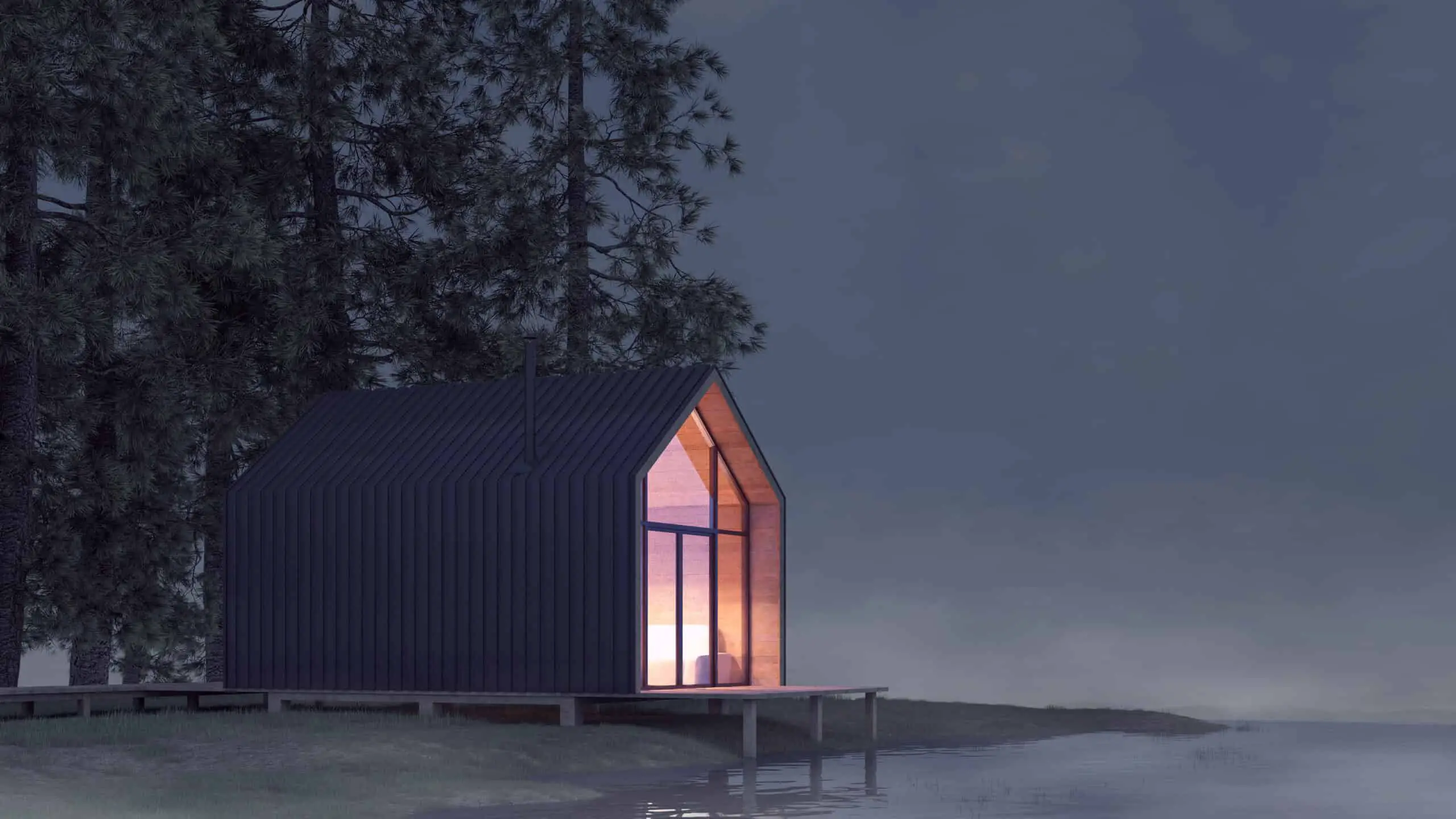Modular homes rarely experience warmth-related issues during the winter months since they are good-quality constructions built up to at least the minimum requirements established by the building codes. The building codes guarantee that the house can maintain a comfortable temperature indoors. Still, due to the modular building process, modular homes tend to offer additional benefits regarding thermal comfort.
Benefits of modular homes regarding thermal comfort:
- Adhering to the building codes
- Build in a sheltered environment
- Exhaustive quality control during construction
While all these benefits apply to most modular homes, some manufacturers go beyond ensuring a comfortable temperature and aim for heat efficiency. A heat-efficient modular home is built to maintain a comfortable temperature with minimum energy consumption. Meaning the house will stay comfortably warm in winter, and the bills won’t go up.
How to keep a house warm
In order to maintain a comfortable temperature indoors, the house has to be capable of both producing enough heat to reach the desired temperature and retaining the warm air. To achieve this purpose, we focus on two key design strategies:
- Active design Strategies: These produce heat by using energy. The most common forms of energy utilized are purchased electricity or gas. Though, there is a great variety of heating systems using different energy sources such as wood, oil, or coal.
- Passive design strategies: These strategies ensure that the heat produced is kept inside, providing a comfortable environment to live in. The main goal of these strategies is to design a building envelope with enough insulation to reduce the amount of heat leaving the house.
What makes a modular home stay warm in winter
Modular homes are warm in winter mainly because of how they are built. These constructions are built to provide an environment that is at least as warm as most traditional houses. However, the modular home envelope is often improved as a result of the modular construction process.
Modular homes adhere to the Building Codes
In most states, the building codes require that residential indoor spaces should be capable of maintaining a minimum indoor temperature of 68ºF (20ºC) [1]. In order to accomplish this measure, the codes focus mainly on the house’s envelope: every modular home has to be built to grant the minimum insulation values according to its climate zone. The most essential elements to consider are the insulation (R-Value) and windows (U-Factor) [2].
Modular construction takes place in a sheltered environment.
Most of the modular home construction takes place off-site in an environment that is sheltered from rain, snow, and temperature changes. A space that is protected from the elements offers optimal working and storage conditions. While the quality of the labor is often enhanced in such circumstances, one of the most significant advantages is the preservation of the materials’ quality. Keeping the initial quality of the construction materials guarantees that the thermal properties calculated by the engineers are maintained once the house is finished.
Quality controls are exhaustive in modular construction
To ensure thermal comfort, precise execution of the construction work is essential. Even if the house’s walls are built with the necessary amount of insulation required by the building codes, it could experience temperature loss due to insulation discontinuities or air leaks. Modular construction counts with extensive quality control. Monitoring, and testing at every stage of construction, facilitates identifying any possible mistake that could lead to a lower thermal comfort.
The upgrade to heat efficiency
All homes built up to the building codes can provide a comfortable temperature indoors, though they require a heating system to achieve that. The most common heating systems use a lot of energy and strongly impact bill costs. Some modular home manufacturers choose to upgrade their construction up to heat efficiency to lower or even cut down on the energy requirements to maintain the house warm all winter.
How to upgrade a modular home to heat efficiency:
- Location and placement of the house: Considering the location and orientation of the house during its design can help reduce heat production. The ideal house placement receives unobstructed sun to heat the house naturally.
- Improved insulation: A heat-efficient modular home offersan extra care to the insulation and air tightness of the building. Details such as the wall and window joint are carefully designed to avoid air leaks since they will lead to heat loss.
- Thermal-resistant windows: The windows alone are responsible for as much as 25 to 30% heat loss. Heat-efficient modular homes generally choose windows with the Energy Start certificate, or NFRC labels can be a good start to ensure a good energy performance [3].
- Energy-efficient heating systems: Most heat-efficient modular homes need a heating system to help increase the temperature to a comfortable value. To ensure that the energy usage of these systems is maintained as low as possible, generally, the systems chosen are those certified with Energy Star.
- Energy production: Some manufacturers even provide the house’s natural energy production system, such as solar power and/or wind energy [4]. By doing so, they can design what is known as a Net-Zero home which is a house with a cost-zero energy bill since the small amount of energy that needs to function and keep the house warm is generated on-site [5].
References
- (2022, November) Code Library: New York City, New York American Legal Publishing https://codelibrary.amlegal.com/codes/newyorkcity/latest/NYCadmin/0-0-0-79150
- (2021) International Residential Code IRC ICC Digital Codes https://codes.iccsafe.org/content/IRC2021P2/chapter-11-re-energy-efficiency#IRC2021P2_Pt04_Ch11_SecN1102
- Update or Replace Windows Energy Saver, U.S. Department of Energy’s (DOE) consumer resource on saving energy and using renewable energy technologies at home. https://www.energy.gov/energysaver/update-or-replace-windows
- Green, D. (March 31, 2021) 14 Energy-Efficient Home Features to look for when House Hunting Homebuyer https://homebuyer.com/learn/energy-efficient-homes
- Fixsen A. (July 7, 2020) How to design a Net-Zero Home Architectural Digest Magazine https://www.architecturaldigest.com/story/how-to-design-a-net-zero-home



